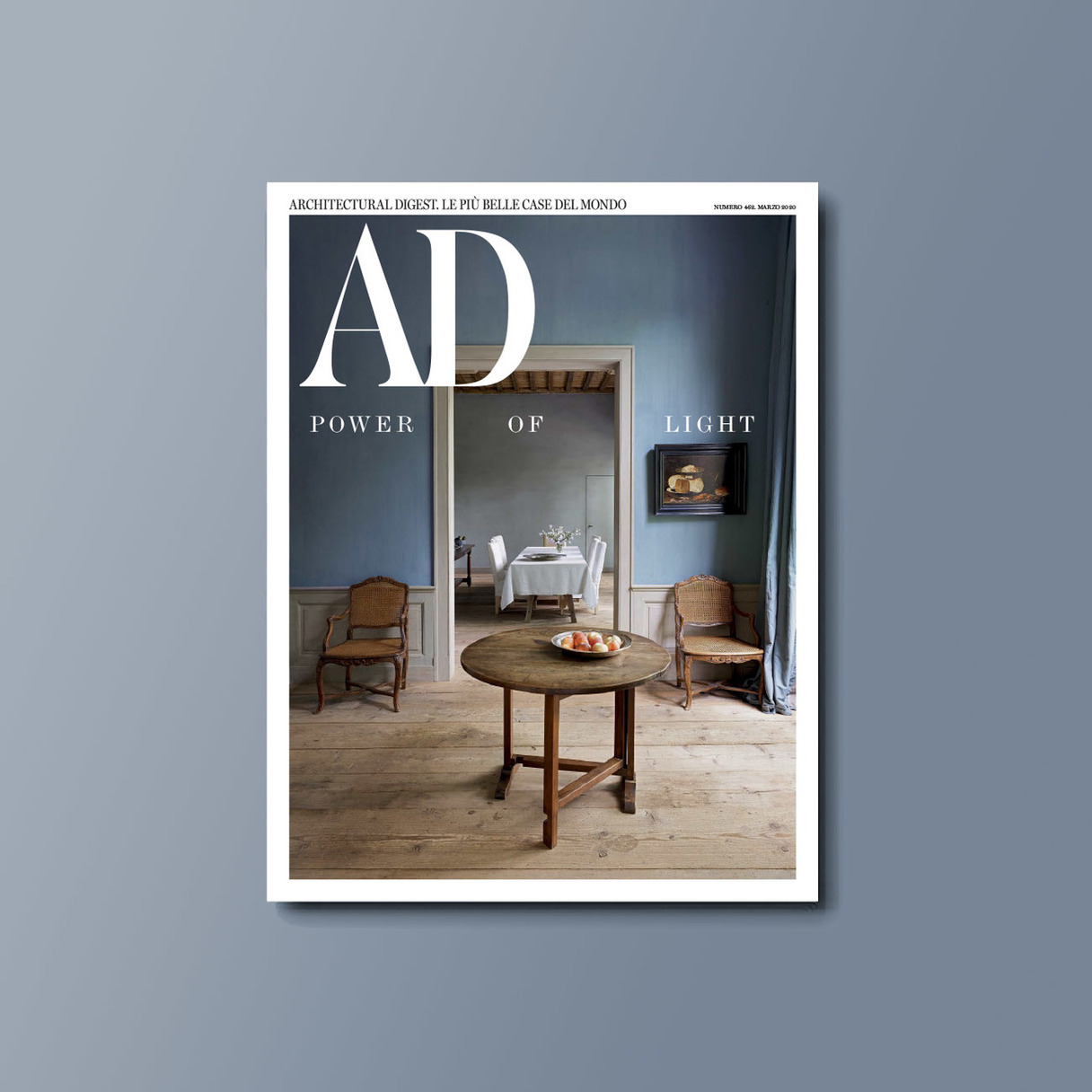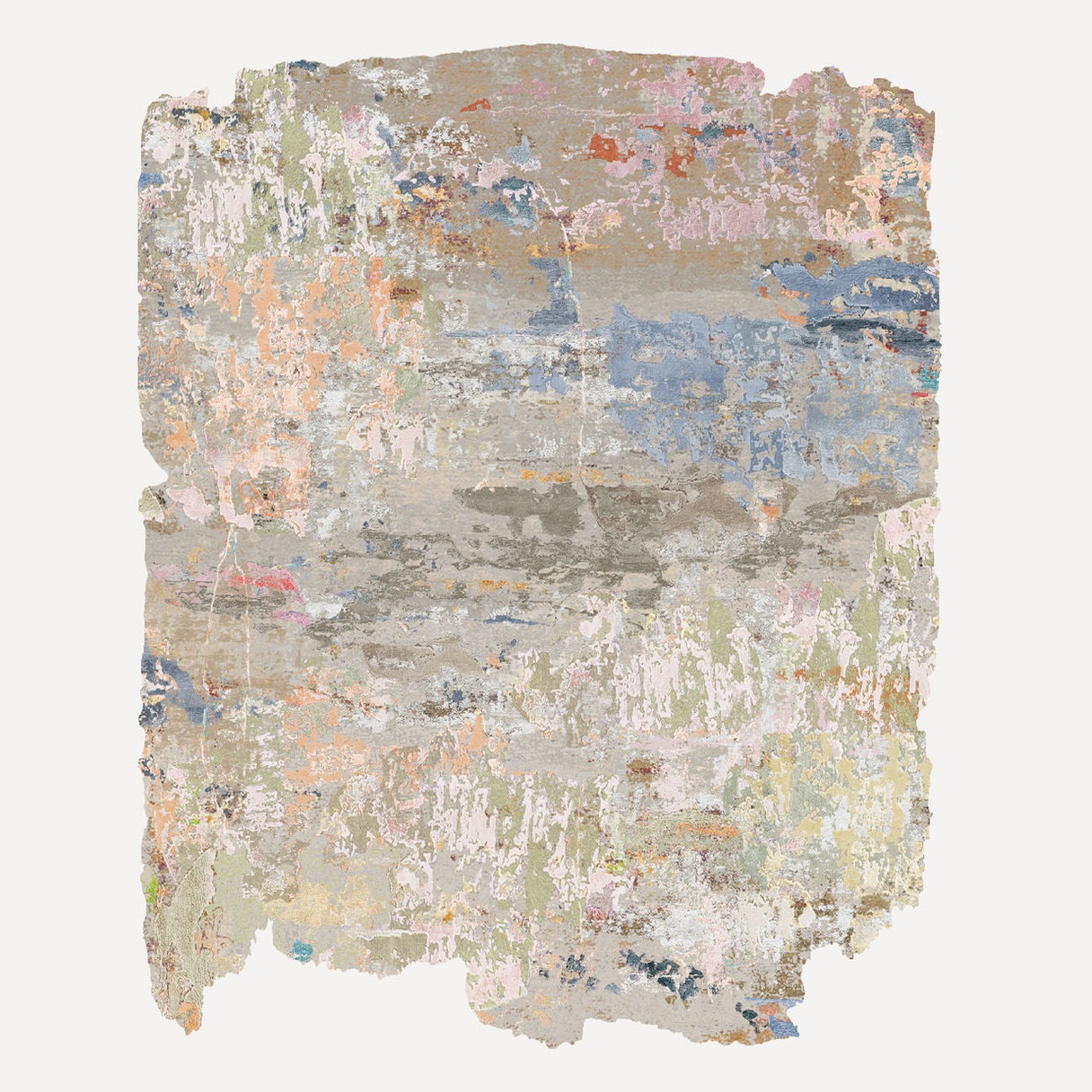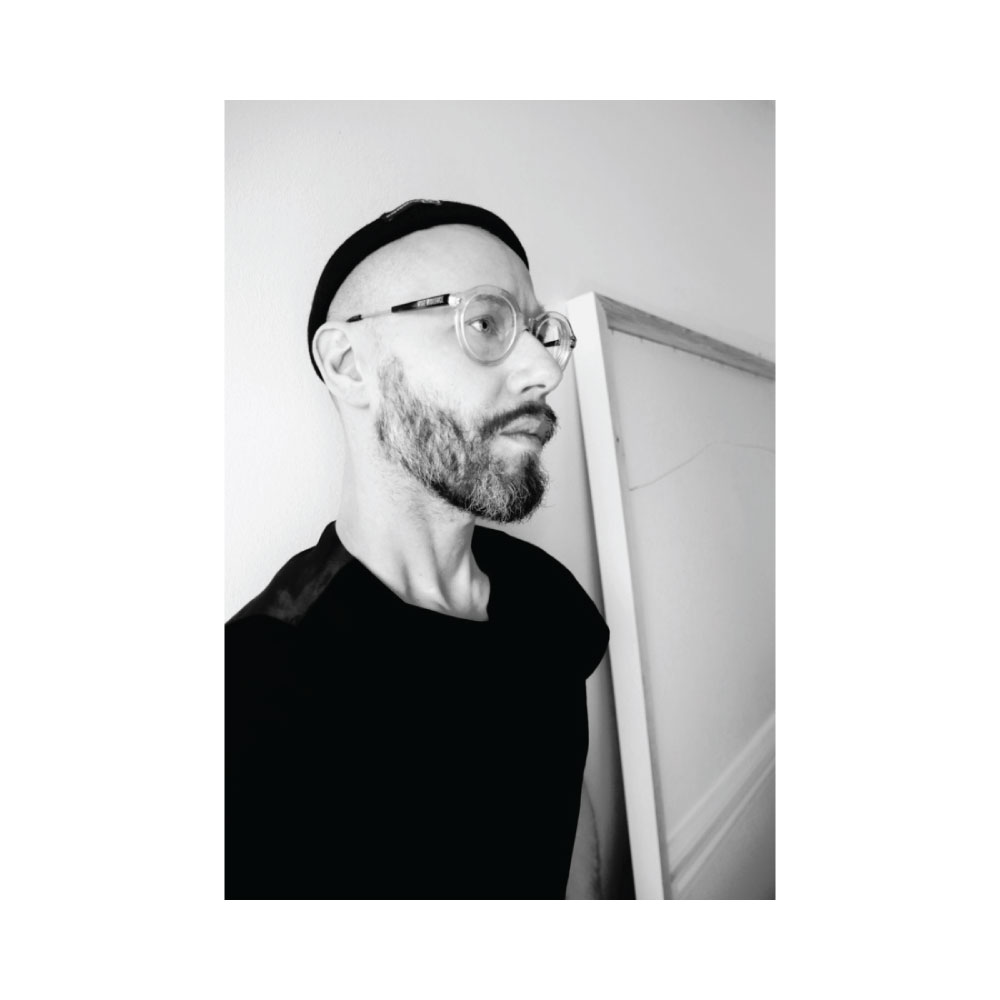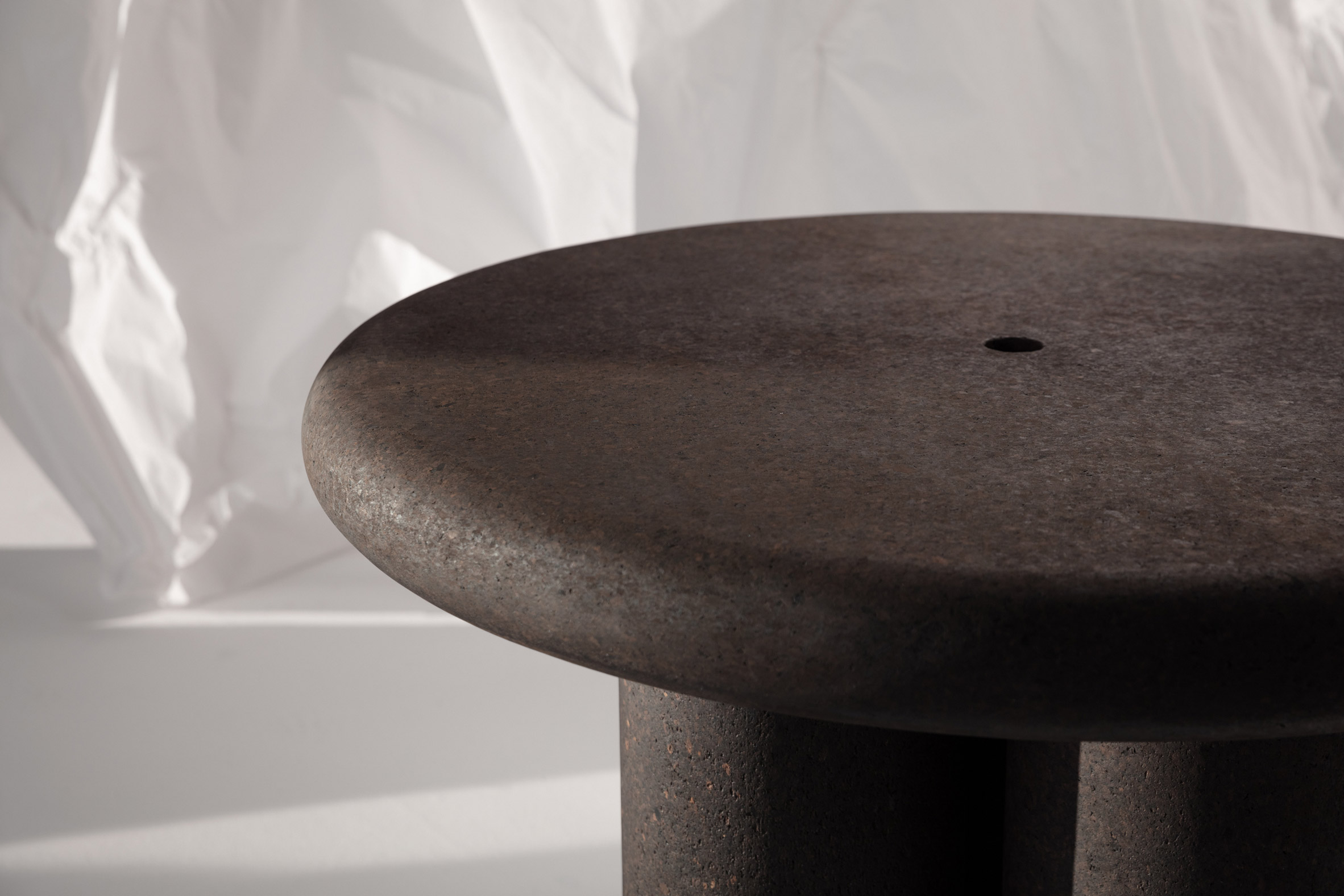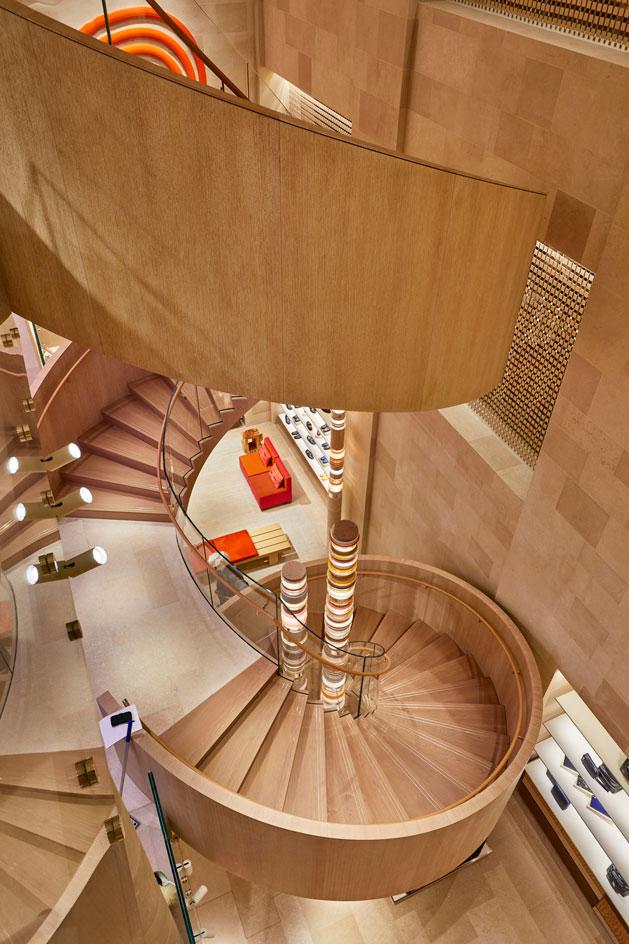Culture
- March 24, 2020
Calle Henzel's latest designs resonate with Videre Licet's Smoked Rhizome
CALLE HENZEL Via Sebenico (196 Ugo Bassi, Isola, Milan), 2015 / 2020 (in-situ)Hand knotted, Persian weaveWool, Nettle, Lyocell, Linen & SilkHigh & Low CutCustom size / colors upon requestCALLE HENZEL Kastrup (Closed on Sunday Edit), 2019Diamond Dust / EarthHand knotted, Persian weaveWool & SilkHigh & Low CutCustom size / colors upon requestAD ITALY + AD FRANCE
Henzel Studio is pleased to announce the inclusion of two Calle Henzel designs; Via Sebenico and Kastrup (Closed on Sunday Edit) in Architectural Digest Italy and Architectural Digest France.
Portrait of Calle Henzel,Creative Director of Henzel StudioCALLE HENZEL
Calle Henzel has over the past twenty years translated his artistic practice as painter and collage artist into the medium at hand, positioning Henzel Studio as one of the most progressive luxury rug brands in the world. While remaining at the forefront of design, Henzel Studio’s foundation and raison d’être lies in the artisanal production of local communities in Nepal and India that dates back thousands of years. Calle Henzel has collaborated with some of the most prominent names in contemporary art and artists foundations including Tom of Finland Foundation and The Andy Warhol Foundation for the Visual Arts. His collaborations and own designs has been exhibited at prominent venues such as MOCA, Katonah Museum of Art, Boca Raton Museum of Art and The Goss-Michael Foundation. These actions have further elevated the studio as an influential and global cultural force. The organic and artistic process of Calle Henzel has been the driving force in the development of Henzel Studio’s designs. He has over the years in an uncompromised fashion challenged the traditional conventions of subjec matter, shape, finishings and special treatments as a result of painstaking research that includes vintag treatments, intricate surface compositions and even natural erosion – methodologies that further blur the distinction between art and design.
- March 18, 2020
Female Designers of Sculptural Furniture: Daniele Albright of Videre Licet
The work of these creators, who all happen to be women, bridges the divide between art and design.
Sometimes, functionality is not enough — you want the furnishings you employ for seating, storage and illumination to be works of art. These five women, ranging from a Munich-born designer who crafts chandeliers for royalty to a polydisciplinary British talent with a thing for outer space, achieve that ideal balance, creating sculptures that are both dazzling and usable.
Daniele Albright, of Videre Licet
Videre Licet Subtracted Cube chair, 2015
Daniele Albright embraces contradictions. “I love conceptualizing things in a digital space but making them in natural materials,” says the Los Angeles designer behind Videre Licet.
“The digital space is my sketchpad, I very rarely use a pencil and paper,” Albright explains. And she brings those ideas to (non-virtual) life, in wood, metal and glass — substances that reflect her “deep respect for ecology,” she says, not to mention her love of tactility.
Judging from her root-like Smoked Rhizome table and gleaming Subtracted Cube armchair, she chose the right line of work. She’s certainly never bored. “One day you’re refining a design concept, another day you’re out materials sourcing, then the next you may be doing hands-on prototyping,” she says.
“Design is also a profession that connects you deeply to the world because anything can be a source of inspiration,” Albright continues. “You’re always looking at things closely — whether it’s the mass of a concrete slab or the intricacy of how leaves form and grow.”
Lara Bohinc
Like much of Bohinc Studio’s furniture collection, the Apollo armchair and Planetaria floor light are inspired by outer space. Photo by Philippe Fragniere
Whether she’s creating jewelry, fashion accessories, ceramic objects or ethereal furniture, Gucci and Cartier, the Slovenian-born, London-based Bohinc gives her pieces a celestial spin, as evidenced by her Orbit chairs and tables, Apollo armchair and Saturn seating.
“I was always making things as a child,” Bohinc tells us. So it was no surprise she wound up studying industrial design at the University of Ljubljana’s Academy of Fine Arts and Design, moving on from there to London, to attend the Royal College of Art for jewelry design. Today, she collaborates with small artisan-led workshops, completing her metalwork in Portugal and Italy.
“Metal is my favorite material,” she says. “It is so malleable and yet so hard and durable. It can last thousands of years, and yet you can always melt it down and shape it again, over and over. It is the ultimate sustainable material.”
Anna Karlin
Anna Karlin Layered dining table
The elegance of Anna Karlin‘s sleek stools and glassware seems almost effortless. But honing her aesthetic took time and testing. “I can look back and see my language really developing,” she says.
Today, the London-born, New York–based Karlin produces reliably beautiful designs characterized by a tension between the man-made and the natural, most famously embodied in her seating and tables shaped like streamlined chess pieces. “My work is driven by form, and then the materials choose themselves,” she says.
“If a piece demands a material I haven’t worked with before, I research and develop until I work out how to do it,” Karlin continues. Starting with sketches or models in clay, she plays with an idea until she’s nailed down the elements. “These pillars then become the crucial threads in the work.” she explains.
Eva Menz, of Atelier 001
Part of Atelier 001‘s Diamond collection, the Aladdin wall light resembles a giant dangling earring.
Eva Menz, the London-based maker behind Atelier 001, crafts enchanting creations that lead charmed lives. One of her sculptural lights currently resides in a royal palace, another in a luxury yacht. “I’m over the moon because ever since I launched the collection, I dreamed of where my lights were going to wind up,” says the Munich-born Menz. “It’s happened straight away that we’re in that illustrious group of people whom I admire.”
“Authenticity in the process is paramount,” she says. “I really focus on the makers and how it’s conceived.” Inspired by fine jewelry and glimmering gems, her Diamond collection required nearly a year of testing before the mechanics were properly hidden. “For me, the most important thing was to make something quite abstract work commercially,” she says. “I guess it’s a continuous journey, because our pieces are so well made.”
Leah Ring, of Another Human
Another Human Zorg chair and Rebi side table
Another Human founder Leah Ring had been quietly making furniture on her own for years. But by 2017, she felt it was time to share the bevy of prototypes she’d assembled in her Los Angeles workspace with the world. “I love product design and the creative control I have over the process,” says the former interior designer for Reath. “I’ll always do interior design as well, as I think the practices inform one another. But product design allows me to be a little more free in my creative expression.”
Ring’s playful designs, which wink at Memphis Milano and the late-1960s Italian Radical design movement, are anything but ordinary. “Everything starts with a sketch,” she says, be it a see-through table filled with Tutti Frutti candy or a quilt that resembles a moving blanket. “I tend to draw a bunch of versions of an idea to make sure I’m not missing something, but usually the finished product looks really close to my very first sketch.”
From these sketches, she creates prototypes in her studio — ”I like using foam core to make full-scale models or at least models of some design details” — after which she drafts more technical drawings, gathers samples and starts the conversation with her local fabricators.
- March 12, 2020
HELMUT LANG X HENZEL STUDIO @ TWENTIETH
HELMUT LANG, Untitled, 2013 (in-situ) (Henzel Studio Collaborations)Hand knotted, 255 x 245cm (100 x 96,5ins), Wool & Silk, High & Low CutCustom size upon requestHelmut Lang portrait. Photo: Elfie Semotan (top)HELMUT LANG X HENZEL STUDIO @ TWENTIETH, LOS ANGELES
Henzel Studio is pleased to announce the display of a rug designed by HELMUT LANG in collaboration with HENZEL STUDIO, currently on view at TWENTIETH, Los Angeles.
For Henzel Studio, Helmut Lang re-appropriated the shape of his sculpture Behind (2012). The surface and finishings have been crafted though different pile heights and material compositions.
HELMUT LANG
Born in Vienna 1956, Helmut Lang lives and works in New York and on Long Island. Lang walked away from a groundbreaking career in fashion to pursue his original true calling as an artist. Hailed for the rigorous and direct ethos of his forms and choice of materials, he has been met with similar acclaim for his art since leaving the fashion world for good. Since 2005, Lang has permanently turned away from creations in direct context with the human body, and has since turned his focus exclusively to two- and three-dimensional artworks which subtly allude to notions of the figure using different media such as sculpture, wall pieces, installations and videos, predominantly built from found and readily available materials. In his former occupation, he left an everlasting imprint on contemporary culture and how it is communicated, by redefining fashion codes and the modus operandi. His undeniable influence continues to reverberate to the present day. He simultaneously produced his own artwork while collaborating and exhibiting with different artists, most notably with Louise Bourgeois and Jenny Holzer, which has broken collateral ground in the recent resurgence of collaborations between fashion and art. An exhibition of Helmut Lang’s sculptures is opening at MOCA Westport on March 15th.
HENZEL STUDIO COLLABORATIONS
Since the launch of 'Henzel Studio Collaborations' at Barneys New York Madison Avenue in 2014 during Frieze Art Fair, Henzel Studio has developed art rugs with over thirty contemporary artists including Richard Prince, Helmut Lang, Jack Pierson, Nan Goldin, Scott Campbell, Richard Phillips, Marilyn Minter, Mickalene Thomas and Anselm Reyle. Extensive collections have also been developed in collaboration with artist’s foundations, that to date include Andy Warhol Foundation for The Visual Arts and Tom of Finland Foundation.
Free to disregard design movements and related principles and rules, the featured artists were invited to freely and seamlessly translate their work and artistic ethos into the media at hand, exploring shape, volume, and finishing, where practicality was secondary to concept. This creative brief allows all artists to embrace the outcome as part of their body of work.
TWENTIETH
Since 1999 Twentieth has been a leader in the curation of contemporary luxury furnishings and decor, bringing together the finest international designs with work from leading edge talent to create an environment that blends design and art into a unique aesthetic vision.
EXHIBITIONS
Solo exhibitions of the 'Henzel Studio Collaborations’ program have been mounted at venues that include Barneys Madison Avenue (New York), Colette Gallery (Paris), The New (Los Angeles), Joyce (Hong Kong) and Goss-Michael Foundation (Dallas). Our rugs have been included in museum exhibitions at MOCA (Cleveland) and Katonah Museum of Art (New York) and Boca Raton Museum of Art (Florida).
- March 09, 2020
dezeen: Tom Dixon designs furniture collection from "dream material" cork
British designer Tom Dixon is releasing a series of furniture made from cork that has been charred to give it a rich, deep brown colour reminiscent of rosewood.
The Cork collection features a shelf, stool and three tables, with chubby, rounded silhouettes that are designed to let the material shine.
"When I was growing up we had cork floors and they had this amazing warmth and tactility," Dixon told Dezeen.
"It's also sound absorbent, fireproof, water resistant and lighter than water, which is why it floats, so it's easy to transport. In terms of a dream material, you couldn't really get a lot better."
The raw material itself is derived from the outer bark of the quercus suber tree, commonly known as the cork oak.
Today, the majority of it is used for the production of bottle stops, which are punched out of sheets of the bark. For the Cork collection, the remaining, pre-consumer waste material from this process was granulated and compressed into composite blocks.
At this stage the material was also charred, "a bit like popcorn" so it browns and expands. This means the final pieces are less susceptible to dirt, while also steering clear of an overly Scandinavian aesthetic.
The material was mixed with a small amount of polyurethane resin to bind it at a ratio of 93 per cent cork to seven per cent resin.
"We experimented with using no filler at all when we trialled the furniture in our restaurant in Milan, but people would pick out the granules and we couldn't really let that happen with the final collection," explained Dixon.
"It can still be continually recycled, even with the resin. Combined with waste tyres in can be used for flooring or playgrounds. There is pretty much no waste in the process, even the dust from the production is used to power the furnaces in the factories."
Dixon sources the material via the same Portuguese manufacturer that is also supplying cork for the 2020 Serpentine Pavilion designed by South African architecture studio Counterspace.
Thanks to its waterproof, fire retardant qualities, the material has historically been used in the production of shoes, as well as for flooring and wall cladding.
Today, it is experiencing a resurgence in design and architecture due to the fact that is it also recyclable and, according to Dixon, carbon negative as it can be harvested without harming the tree that it grows on.
"You're not cutting a tree down like you would for a wooden table or chair – all you're doing is skinning it," he explained.
"So you're planting trees with the long-term in mind and you harvest every nine years," he continued.
"All this time, the material effectively captures carbon as it grows. The tree continues to grow more bark, that bark captures more carbon and you're planting more trees to make more cork. Meanwhile, the carbon that's stored in the cork stays in the furniture pieces unless it is burned."
To keep transport to a minimum, the pieces themselves are also produced in Portugal, with the round tables and stools made from solid cork while the rectangular table and shelf have a cork veneer over a plywood and cardboard frame.
"Because they are so long, they would warp if they were solid cork," said Dixon. "So they have a cardboard and plywood base to hold them up."
The soft, rounded edges are created through CNC milling machines, with the offcuts reused to form new composite blocks.
"I was very angular before I was a dad," the designer remembered.
"But once you've had a kid walk into the corner of a sharp table you suddenly start rounding everything off," he continued.
"It sort of happened without me realising. But on a practical level, corners and sharp angles will deteriorate very quickly in a soft material like cork so it was also about making them less destructible."
Dixon first conceptualised the round table and stools for his Gardening Will Save The World installation with IKEA, which won a silver medal at last year's Chelsea Flower Show.
But this latest iteration sees the material used across a range of different furniture pieces, which will be available for purchase from the end of March.
There has been a marked rise in cork-clad buildings in recent years, from a Stirling Prize shortlisted house in Berkshire, England, to a Berlin home that repurposed waste from wine production.
British designer Jasper Morrison shared his own take on cork furniture last year, which was made from industry offcuts.
Photography is by Peer Lindgreen.
- February 07, 2020
Kebab Lamps by Committee and Established & Sons re-released
British design brand Established & Sons and design studio Committee have released new versions of their Kebab Lamps, featuring miscellaneous found objects skewered on a central pole.
The stacks of trinkets challenge people to face their love of stuff said Committee, which is headed by artists Harry Richardson and Clare Page.
"If we don't declare honestly that humans love objects, fashion, novelty, beauty and visual pleasure then it seems unlikely to us that we will find sensible ways to fix our overconsumption," said Richardson and Page.
Committee created four Kebab Lamps, featuring an updated pleated fabric shade and stone base. The lamps will be presented as part of the Established & Sons Limited Edition collection at the the upcoming Nomad St Moritz art and design event.
Each lamp is a unique object made by stacking eclectic found objects on a central stem. The combined effect is intended to highlight the impact of mass production and our consumerist habits.
Committee told Dezeen that the original Kebab Lamps anticipated the adoption of the term anthropocene, which is used to describe how human beings are influencing the global environment.
"Obviously, the lamps were no solution themselves to excessive consumerism, but they were not intended to be," the designers said.
"They were an illustration of it."
Rather than being purely critical of mass consumption, the products aim to fuel debate that could help address some of the issues associated with our dependence on producing and consuming.
"With the Kebab Lamps we wanted to show there is a joy in owning objects, as well as a cost," the designers added.
"Each lamp is a small, visual poem on globalisation; impressive and yet simultaneously 'too much'."
The process used to produce the Kebab Lamps today is much the same as when they were first developed in 2003.
Their creators said the main difference is the use of objects that they would perhaps have overlooked ten years ago.
Many of the objects are sourced from the "tat markets of south London," they said, "where we are confronted by the under-belly of retail, the wastage of globalised, mass consumerism".
The new pieces feature fabric shades that are made using traditional methods by a Danish manufacturer.
The crisp finishing on the pleated shades enhances their graphic aesthetic and the plain fabric creates a contrast with the maximalist assemblage of objects.
The new bases are made from stone offcuts that the designers selected from specialist supplier Diespeker to suit the aesthetic of each individual lamp.
Every lamp is unique, with Committee producing up to eight examples per year. Each piece has its own name and is carefully assembled to tell a story about various themes such as thought, power, civilisation, luxury and responsibility.
Established & Sons was founded in 2005, initially as a platform for promoting British design and manufacturing. It went on to work with international designers, including Konstantin Grcic and Ronan and Erwan Bouroullec.
In 2017, one of the brands original co-founders, Sebastian Wrong, returned as design director and vowed to ensure its collection focuses on the founding principles of "artistry, freedom, ingenuity and a pursuit of the extraordinary".
- February 04, 2020
Lee Broom on Surface
Lee Broom is one of the UK’s leading product designers. With his highly original brand of luxury furniture and lighting designs, his work is recognised and retailed across the globe. Since he founded the company in 2007 Broom has created over 100 furniture, accessory and lighting pieces, all of which are designed, manufactured and retailed under the Lee Broom brand. Winning over 30 awards to date, including ELLE Deco International Design Award for the second consecutive year in 2019, British Designer of the Year, and The Queen’s Award for Enterprise presented by Her Majesty The Queen in 2015, the past 12 years have seen the brand grow at an unprecedented rate. Broom has made design a successful global business with products retailed in over 250 stores in 50 countries around the world alongside his own flagship showrooms in London and New York.
Surface Says
Prolific in not only the products and spaces he creates, but also the awards he garners for them, Lee Broom is bound to be a future classic.
SEEN ON SURFACE
- What’s New, From Our List Members
- Need to Know: Lee Broom of Lee Broom Lighting
- What’s New This Week, From Our List Members
- What’s New This Week, From Our List Members
- 14 Star Displays Around Town in Milan
- Milan Design Week 2018 Preview: 14 Things Our Editors...
- John Pawson, Barbara Bestor, and 7 Other Top Design...
- Spotlight on London: 5 British Brands to Know
- Everything You Need to Host the Best Dinner Party Ever
- Lee Broom’s Time Machine
- December 20, 2019
In the Studio With Julian Mayor
See how artist Julian Mayor designed a bar in collaboration with Artnet and Maestro Dobel Tequila.
In Miami this December, UK-born artist Julian Mayor debuted the results of a yearlong artistic collaboration with Artnet and Maestro Dobel Tequila: a nearly eight-foot-long freestanding bar and editions of 70 steel cocktail vessels and hand-blown tequila-tasting glasses.
The works, which straddle the space between art and design, were presented at the famous Herzog & de Mueron-designed building at 1111 Lincoln Road on South Beach in Miami during an intimate dinner hosted by Artnet and Maestro Dobel Tequila on the occasion of Art Basel Miami Beach.
The pieces were inspired by the geometry of the agave plant, from which tequila is sourced—a symbolic nod to Maestro Dobel, whose signature blend is distilled from 100-percent blue agave, harvested on an estate in Jalisco, Mexico.
While Mayor’s original vision for the project centered primarily on the creation of the bar, a recent trip to Mexico City inspired the subsequent production of the steel vessels, which are available for purchase individually and exclusively through Artnet
Explore the 360-degree video above to see how Mayor designed the steel cocktail vessels at his South Yorkshire studio.
- October 23, 2019
Peter Marino creates new London boutique incorporating commissioned Matt Gagnon light sculptures
Louis Vuitton Storefront
Long-term Vuitton ally Peter Marino is known for his big, sexy, gallery-cum-galleria projects. In 2017 he returned two hôtel particuliers at 2 Place Vendôme in Paris to their former glory, creating a vast, sun-soaked home for Louis Vuitton, studded with bold artworks and site specific installations. This week, the brand’s revamped 17,500 sq ft London Maison on New Bond Street opens its doors after 14 months in the making. Step over its Damier check threshold made of warm Croix Huyart limestone and cool Pierre Bleue du Hainaut marble – bathe in luxury and light.
Gone is Marino’s once newfangled, illuminated LED floor and staircase – installed when the store first opened in 2010. It has been replaced with a softer, double helix cerused oak structure that now quietly connects three floors. The towering wall of trunk shelving has gone too, as has the darker wood cabinets – the immensity replaced with a convivial allure. Sections of the middle floors have been cut away to create a double height void, a vast skylight lending a voluminous, bright élan to the passing parade.
In among the wares are antique African anklets, mid century Danish furniture, Jean Touret cabinets and piles of books, vases of seasonal blooms. Four Cocoon chairs by the Campana Brothers hover high in the main atrium, heralding the arrival of a dedicated space for Objets Nomades, Vuitton’s full travel and homeware collection. The pieces inject pops of colour to the stone toned interior. British artist Annie Morris’ colourful spherical totems have been transported from the Place Vendôme store, here placed against a glass wall so they can be seen across the third floor balcony.
Custom "Light Stacks" by Matt Gagnon
Three tall stacks of LED, dyed concrete, oak, acrylic and brass discs by Los Angeles-based architect and designer Matt Gagnon run through the central cavity of the staircase, leading down to Virgil Abloh’s incisive work for the house. His pop art performance-wear pulses with vitality in Marino’s sombre staging; fitting room doors are re-purposed pieces by Italian designer Gaetano Pesce, dating back to the mid 1990s. Andreas Gurksy’s giant Düsselstrand print from 1996 hangs on a stone coloured wall; London based furniture maker Martino Gamper’s Wom table, with its warm insets in redwood and cedar, leads you into the men’s shoe department. Paolo Giordano’s cast bronze Ethno-Eames chair smoulders against an ochre rug.
The floor above is where Nicolas Ghesquière’s sensuous sci-fi womenswear lives. New Bond Street will be the only Maison in the world, aside from Maison Vendôme, to hold a full high jewellery collection as well as a selection of demi-couture based on red carpet styles that can be made to order. The hallowed apartment and private shopping suites on the fourth floor are now reached by a jolly staircase finished entirely in pink, yellow, green and aqua tape by Scottish artist Jim Lambie or can be accessed via a gold-leaf lined elevator. A giant portrait of the young Louis Vuitton himself by Alex Katz – commissioned in 2017 – is installed on pale checked walls, surrounded by ceramics by Dutch design studio Floris Wubben and generous, nubby sofas
- October 15, 2019
Designer of the Day: Julian Mayor
Julian Mayor’s mesmerizing gem-like pieces toe the uncharted yet fruitful lines between digital design and traditional fabrication, but his latest body of work, the subject of a recent solo exhibition at THE NEW in Los Angeles, embodies the best of both worlds. Each piece recasts technology as sculptor while glistening with a splendid metallic sheen and curious imperfections that could only be achieved through meticulous handicraft.
Here, we ask designers to take a selfie and give us an inside look at their life.
Age: 43
Occupation: Artist and designer.
Instagram: @julian.mayor
Hometown: Doncaster, South Yorkshire, UK.
Studio location: Doncaster, South Yorkshire, UK.
Describe what you make: With a background as a product designer and a constant interest in making things, I have created distinctive and original pieces of furniture for the past 15 years. The pieces are designed on a computer and then made by hand in my studio. Their aesthetic has a technological sensibility, but with the warmth and unique appeal of being handmade.
The most important thing you’ve designed to date: Three stainless-steel sculptural benches near Tate Britain. Their form was developed as a reaction to the site, a fluid series of volumes inspired by their position near the water and to the layers of history contained within it. The surfaces are made up of a complex series of planes that act as angled mirrors to ambient light, allowing the shapes to react to light conditions and the color and brightness of the sky.
Describe the problem your work solves: In the beginning, making things by hand was a necessity but now it is a choice. I like the precision of a technological design process but I also love the individuality and unrepeatability of a work that is made by hand.
Describe the project you are working on now: A show of my work just opened at THE NEW at Twentieth in Los Angeles. Working with Stefan Lawrence, the owner and curator, has been really satisfying. His design vision is demanding and exacting, resulting in pieces that I am really proud of and that push my design, making and engineering skills to the limit.
A new or forthcoming project we should know about: A bar and glassware (in collaboration with Vissio Mexico City) for Maestro Dobel Tequila, to be presented at Design Miami in December 2019. It’s a really great project and I can’t wait for people to see it.
What you absolutely must have in your studio: Music is essential in the studio. My assistant Chris and I listen to everything from the Eagles through Happy Mondays to Future.
What you do when you’re not working: Spend time in London with my partner Lydie and our two kids, Lucas (3) and Elliot (1). At the moment, the boys love the Science Museum in Kensington—there’s so much great stuff for kids to do there.
Sources of creative envy: Lynn Chadwick, a British mid-century sculptor; Tom Sachs and his idea of bricolage; Monir Faramfarmaian, Iranian mirror artist; Bethan Laura Wood; and of course Ron Arad, who was my teacher at the RCA. I also love the writing of Zadie Smith, a British author living in New York.
The distraction you want to eliminate: Overthinking things. It’s a bad habit but I really can’t help it!
Concrete or marble? Concrete.
High-rise or townhouse? High-rise.
Remember or forget? Remember, I hate falling out with people.
Aliens or ghosts? Aliens.
Dark or light? Definitely dark.
- September 14, 2019
SURFACE: Restoration Hardware Knocks Off Christopher Boots
Diamond Ring chandeliers by Christopher Boots
After paying legal settlements to Obsolete and Emeco for ripping off original designs, Restoration Hardware faces yet another accusation of intellectual property theft, this time by Melbourne lighting designer Christopher Boots. (Unsure why this merits scrutiny? We unpack the issue of knockoffs here.) But first, context: Restoration Hardware’s penchant for familiar silhouettes has been noted as far back as 2012. “For decades, lovers of modern furniture, balking at the cost of authorized versions, have settled for inexpensive knockoffs,” wrote the New York Times. “And companies like Restoration Hardware have been eager to meet demand.” The brand’s New York City showroom, at the time located in Flatiron, carried replicas of Arne Jacobsen’s Series 7 chair, Mies van der Rohe’s MR side chair, and Emeco’s Navy Chair, lazily renamed the Naval Chair.
The latter sparked a highly publicized lawsuit, which helped illuminate the widespread epidemic of knock-offs within the design industry. In the Times story, Gregg Buchbinder, Emeco’s long-time CEO, compared Restoration Hardware’s replica to “stealing the Nike Swoosh or the Mercedes-Benz logo, and then exploiting our brand and reputation to produce an inferior product.” (For the uninitiated, quality and craftsmanship have always been Emeco’s beat—one of the brand’s latest collections, On & On by British mainstays Barber & Osgerby, is virtually indestructible.) Take the disparity in price points: The Emeco Navy chair may set you back $455, but Restoration Hardware’s nearly identical replica cost a mere $129. Such a drastic price differential, argued Buchbinder, may make it difficult for customers familiar with both brands to justify the original design’s cost. Ultimately, Emeco emerged victorious—Restoration Hardware agreed to permanently cease selling the Naval Chair, and its existing inventory was promptly recycled.
(FROM LEFT) Navy by Emeco; Naval by Restoration Hardware
It now appears that Restoration Hardware is back on its bullshit. The home furnishings behemoth is currently embroiled in a legal bloodbath after blatantly copying two crystalline fixtures designed by Christopher Boots. The Australian lighting designer declined offers to create his signature quartz crystal fixtures when the brand approached him in 2016, despite being promised $12 million in annual profits. Commodifying his work contradicts the labor-intensive, piece-by-piece detailing required to assemble one of his fixtures, a process that limits production to roughly 12 editions per year, with lead times approaching 18 weeks to ensure the utmost quality. “We’re limiting our range now,” Boots told Metropolis that same year. “The value in the work is its handmade aspect and its rarity, and we don’t want to be a factory of production endlessly making these kinds of things.” Scaling up to mass-market proportions is, and always was, out of the question.
Unfazed, Restoration Hardware introduced near-identical replicas of Diamond Ring and Sugar Bomb, two of Boots’s signature pieces. (In 2014, these two pieces thrust his then-emerging practice onto the global stage after appearing in Hermes’s Vitrine d’Artiste program.) The replicas, dubbed Geode Quartz, were instead attributed to U.K. designer Timothy Oulton. “Given the size of the U.S. furniture market, and [Christopher Boots’s] minimal sales, it would seem nearly impossible for [him] to establish any secondary meaning in that design,” Oulton says.
Christopher Boots
That’s precisely where Oulton and Restoration Hardware miss the mark. Boots has maintained a lifelong fascination with rocks and minerals that led to the genesis of his namesake atelier in 2011. “I found a crystal on a beach when I was eight years old and got totally entranced by that whole world,” Boots told Surface earlier this year. “Quartz was one of the initial materials I worked with because it was so beautiful, clear, and pure. I try to be as reductive and purist as possible to honor the materials.” Not exactly a holistic companion to Restoration Hardware’s comparatively banal mantra of “modern comfort.”
One cease and desist later, Restoration Hardware removed the knock-offs from its website and bricks-and-mortar, though they still appear in the RH Contract Hospitality Source Book and discount outlet stores. Oulton, meanwhile, seems to have started offering a replica “Elysium” line on his own website, self-debasement be damned.
We visited Timothy Oulton’s website so you don’t have to
Boots wasn’t the first designer to call out Restoration Hardware, and, if past is prologue, he won’t be the last. In the first spread of the brand’s 731-page Fall 2019 catalog, chairman and CEO Gary Friedman bloviates about how true leaders must take solace in discomfort for the sake of originality. “In a world that rewards duplication and penalizes the inherent bumpy road of innovation, we will continue to drive ourselves to destroy today’s reality so we can create tomorrow’s future, while remaining completely comfortable making ourselves and others uncomfortable.” Sans context, the proclamation is uplifting enough. When penned by a juggernaut intent on siphoning the creative ingenuity that makes his own industry so great, it’s shameless.





